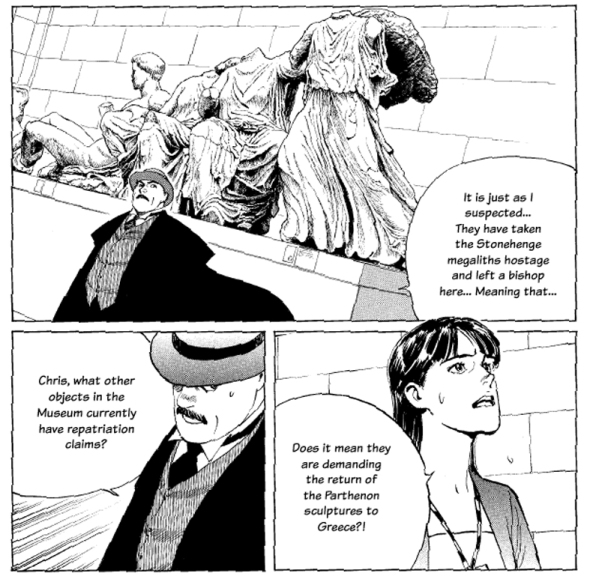From Mike Pitts – Digging Deeper - thinking about archaeology
The new British Archaeology features Professor Munakata’s British Museum Adventure, a wonderful manga-style story that the BM is publishing in October. It’s written and drawn by Hoshino Yukinobu, and was originally serialised in comic form in Japan last year by Shogakukan Inc. Now it has been translated into English and brought together into a single book, and exclusive extracts in the magazine include drawings of Stonehenge, Woodhenge and some Japanese megaliths – revealing which of the two most publicised Stonehenge theories is adopted by the fictional archaeologist-cum-ethnographer (look for the magazine!).
The adventure combines artwork and narrative that remind me of my old favourites Look & Learn, Eagle and Tintin (though without the latter’s humour), with a glorioulsy high-minded approach to culture and history. We are frequently reminded that Munakata’s roots are Asian. On being told his planned trip to Wiltshire has been postponed because of police roadblocks, he comments, “They warned me to expect anything in England”. He discovers tagged tea bags, and English apples (“delicious”). But Munakata takes a strong view against repatriation. He praises the BM’s history of collecting, and fostering public access. “I am one of many Japanese scholars”, he says, “who have benefited from that generosity”. Museums are spaces where, “symbolically, fundamental truths can be displayed for all people in the world”. Wonderful! I had a little piece about this in yesterday’s Guardian.
The rest of the magazine is about real archaeology – iron age metalled roads, a newly identified dark age power base in Scotland, Jim Leary and Dave Field on the association between neolithic monuments and water, a new gold lunula find from Scotland (the first in over a century), and so on. There are some very interesting readers’ letters, Mick Aston writes about his old friend the late Philip Rahtz, and I interviewed the archaeologist and Times correspondent Norman Hammond.

Nessun commento:
Posta un commento